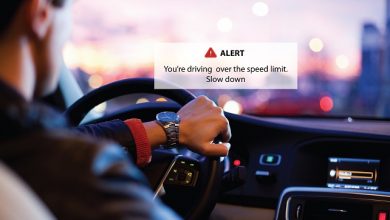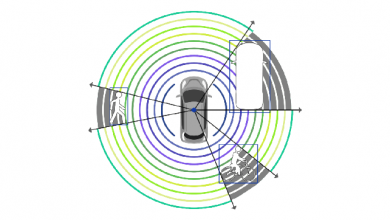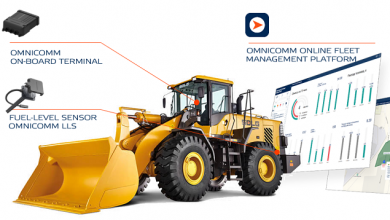Connected cars fuelling the need for application performance monitoring
By Simon Horrocks, Regional VP Australia and New Zealand, AppDynamics
The connected car market is predicted to be worth $USD219 billion by 2025, with the Asia-Pacific region projected to be the largest market for connected cars in this time frame. What’s more, digitally connected roads will soon become a reality in Australia, with reports indicating that the Victorian capital of Melbourne, Australia’s second largest city, will have a majority of its roads digitally connected within 10 years, while toll road operator, Transurban has offered funding to a local Australian startup to develop “smart” roads. The advancements in connected cars and roads will herald a new era in transportation data monitoring and capture. Connectivity will therefore become the driving force behind the automotive industry.
 So it then becomes apparent that car vendors must fast become software companies – but the transition from pure hardware vendors to software companies isn’t as easy as simply deciding to do so, it’s incredibly difficult and requires a completely new set of skills. A recent report by the Victorian Automobile Chamber of Commerce revealed that as electric, autonomous, and connected vehicle technologies grow in popularity, the industry will experience a need for“significant upskilling”, leading to the creation of new jobs. It also comes with a need for critical reassessment of the monitoring and capturing of all this new data. As cars become increasingly connected to networks via built-in connectivity, new challengers will enter the market to uproot traditional car brands, meaning that manufacturers must re-focus on a car’s performance and reliability in the realm of software and connected services.
So it then becomes apparent that car vendors must fast become software companies – but the transition from pure hardware vendors to software companies isn’t as easy as simply deciding to do so, it’s incredibly difficult and requires a completely new set of skills. A recent report by the Victorian Automobile Chamber of Commerce revealed that as electric, autonomous, and connected vehicle technologies grow in popularity, the industry will experience a need for“significant upskilling”, leading to the creation of new jobs. It also comes with a need for critical reassessment of the monitoring and capturing of all this new data. As cars become increasingly connected to networks via built-in connectivity, new challengers will enter the market to uproot traditional car brands, meaning that manufacturers must re-focus on a car’s performance and reliability in the realm of software and connected services.
Lending to the already difficult transition from being simply a car manufacturer to also a software company is the current state of software in cars. Currently, car applications are typically connected to multiple third-party services such as messaging applications and weather applications, as well as hardware such as smartphones and smartwatches that must be integrated and compatible. Whilst most modern cars manufactured after the late 90s come built with computer systems and sensors that can monitor diagnostics such as engine performance, most cars lack any way to monitor the customer experience for the driver or passengers -and considering the average connected car has approximately twice as many lines of code as the Large Hadron Collider, there’s a lot to monitor and even more to deliver on when it comes to the technology behind connected cars.
Connected cars driving demand for application monitoring
From built-in safety features and entertainment to navigation systems and insurance telematics, beyond ensuring people can travel smoothly from point A to B, car manufacturers are now tasked with providing a great digital experience. Whilst it’s all well and good providing these services upfront, the nature of integrated systems and need for constant application updates make compatibility issues inevitable. In order to avoid incompatibilities in the connected car environment, all parties involved – from application development to software, hardware, automotive mechanics, and third-party partners – must ensure they have visibility of their applications down to the base code levels at all times. When something does go wrong and an application begins to behave abnormally in a connected car, identifying the root cause is imperative for fast remedy.
With application performance monitoring, operations teams can pick up on compatibility obstacles or software bugs instantly, and send fixes to these applications through automated online systems that can provide updates “over the air.” This provides a significant point of difference from a feature point of view for car manufacturers looking to develop a competitive advantage in application performance. As the world becomes increasingly connected, those manufacturers, such as Tesla that offer constant application updates to improve performance and offer new features such as self-driving capabilities will stand out from the pack.
Cars as personal, mobile hubs
Being able to view complex ecosystems of applications and monitor their performance has a two-pronged benefit for the connected car industry: firstly, any bugs within the applications can be updated well before a consumer is even aware of any issue. Secondly, the analytics gleaned from such monitoring allows developers to understand how applications are used by different drivers, sending useful information to car manufacturers and technology partners to ensure a highly-personalized in-car experience.
For many, a car is more than just a means of getting from A to B – it is an extension of their identity and individuality. The most rudimentary features of any connected car, such as access to hands-free mobile, built-in GPS systems and infotainment for music and audio-visual, are now a part of any car-buyers’ expectations. Application performance monitoring will be the next frontier to the personalization customers are craving. Personalisation will also be the one core aspect car manufacturers need to stand out in an increasingly crowded market.
Since the automotive sector either needs to either develop its own technology to meet buyers’ demands, or look to broker partnerships with technology vendors who can provide the hardware and software needed, monitoring for data, issues, and compatibility will make or break success in these complicated networks.
A new safety frontier
New features made possible by connected cars, such as lane assist and automated emergency braking are some of the core ways application performance monitoring can be applied to enhance the autonomous car experience and ensure greater safety. With legislation regularly being reviewed surrounding safety requirements within cars, and particularly with the rise of driverless cars, it is imperative that any glitches and security breaches of these safety systems are addressed immediately. Any neglect or incidences should not be tolerated and could have disastrous impacts.
To have the most efficient, modern safety feature in a connected car, they must be designed as embedded systems, which contain the hardware, software, and connectivity features in one unit. This way, manufacturers can have the assurance that safety features within vehicles can be easily activated when needed. The use of firewalls can also add to the confidence that any glitch or bug contained in one service or application do not place other essential mechanisms at risk.
As automobile manufacturers, suppliers, and technology partners jostle for market share in this burgeoning industry, it is essential that application performance monitoring is not neglected.




